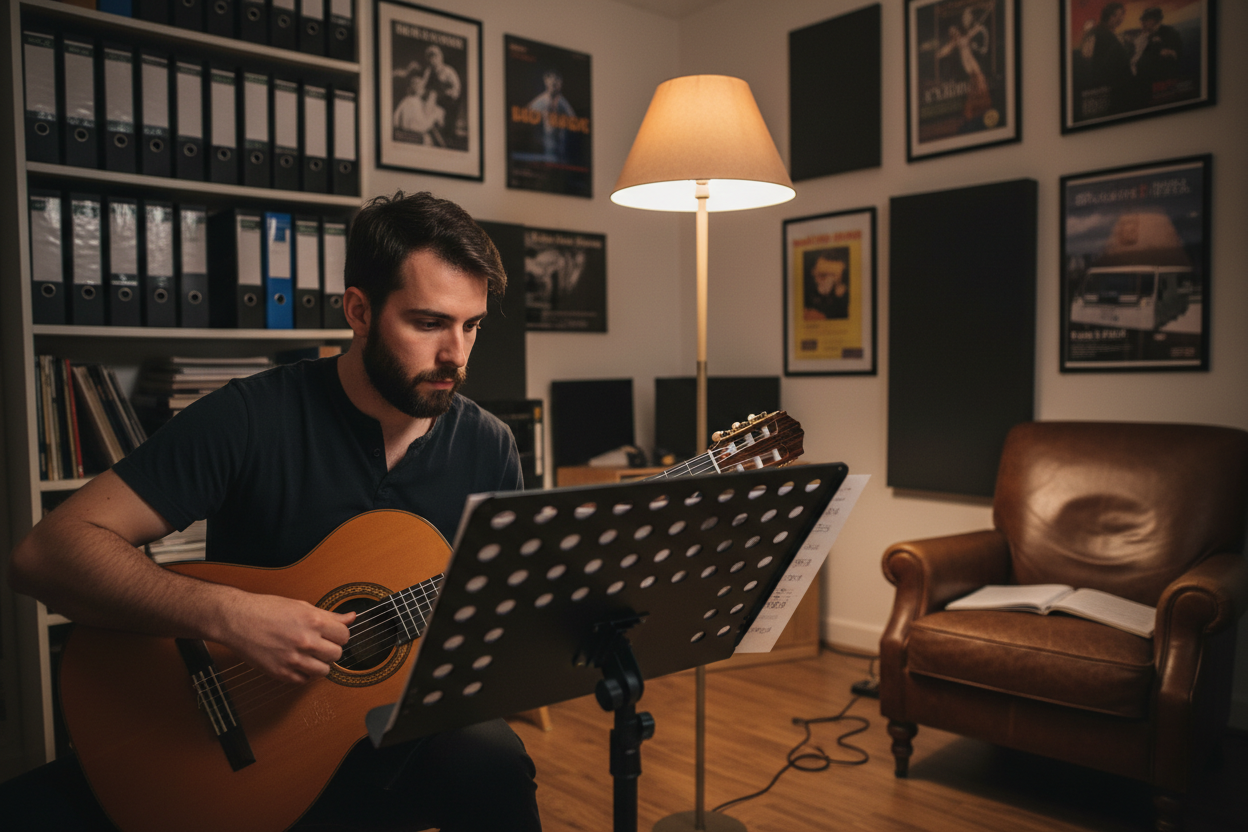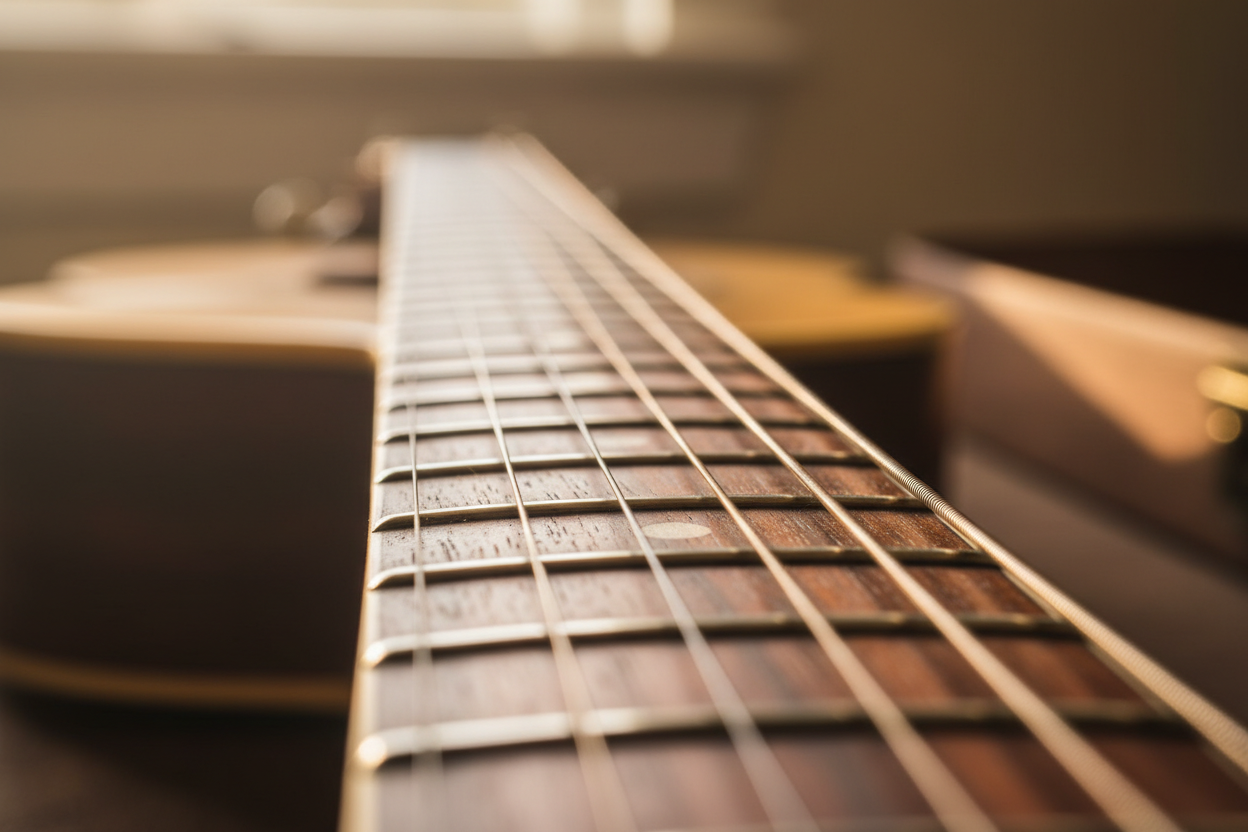If you're looking to better your guitar skills, one of the best things you can do is practice with a metronome. A metronome is a device that produces a regular, audible beat that you can play along to. This is a great way to improve your timing and rhythm and increase your speed with flawless precision. Some metronomes are electric, while others are mechanical, producing their beats by a pendulum swinging back and forth.
Whether you’re a beginner or a seasoned pro, practicing with a metronome can benefit your guitar playing in a number of ways. In this article, we’ll cover the importance of using a metronome, as well as how to effectively use one.
How Can a Metronome Help Your Guitar Playing?
If you are a beginner, it is good to get into the habit of practicing with a metronome. Without it, you will not develop a good sense of timing. You'll likely speed up or slow down whatever song or exercise you are practicing.
Your internal clock will become steady and consistent when you practice with a metronome. The result is that you will play cleaner and with more confidence.
Even experienced guitarists can benefit from using a metronome. They can keep improving their speed and rhythm chops. It's an excellent tool for any musician of any level who wants to improve their playing skills.
How to Use a Metronome When Practicing Guitar
Start by setting the metronome to a slow tempo. Then, as you get comfortable with the beat, you can gradually increase the speed.
When practicing with a metronome, it's essential to focus on your timing and rhythm. Pay attention to each beat and make sure you're playing in time.
Try different rhythms and patterns. Practice playing quarter notes, eighth notes, triplets, etc. Mix it up and have fun with it!
What Guitar exercises Can I do With a Metronome?

An excellent place to start is with a simple chromatic scale. Set the metronome to 60 beats per minute. This tempo might seem slow and boring to some guitarists, but slow is good! You can hyper focus on how well you play the exercise at a slow tempo. Please do not concern yourself with how fast you can play the exercise; our initial goal is to play with precision.
And guess what? Playing slowly with perfect timing can be challenging. You have to space out your pick attack perfectly to land those notes. This takes some practice, but once you master one tempo, the next one becomes easier. It also helps to tap your foot with the beat. Your pick attack should be in sync with your foot. Visualize your picking hand connected to your toe with a long string while tapping along with the beats. They move together in sync.
Pay attention to your fretting hand posture as you play to ensure you are pressing your notes behind the frets so they ring nicely and clearly.
Try not to have any silence between notes; you want the scale to flow nicely and not sound choppy. If you find yourself making mistakes or sounding a bit sloppy, start the exercise over or slow the tempo down even more.
Never continue to practice what sounds sloppy. At that point, you're only practicing how to make mistakes and sound poorly. That's not the kind of muscle memory that we want our hands to have. Many musicians have poor technique as a result of practicing mistakes. The muscle memory learned from practiced mistakes can be difficult to undo, so get it right from the start. Also, an untrained ear might not recognize what sounds good or bad. If you are unsure, record your exercise and give it a critical listen. It's a little easier to determine how well you sound when you play back a recording.
Practice ascending and descending the scale exercise. Once you can play it flawlessly three times in a row, then it is time to increase the speed of your metronome. Increasing the tempo using five-beat increments usually works well with most players. Start at 60 BPM, then 65, 70, and so on. You might hit a point where you need to increase the BPM by only 1 or 2 beats to reach your goals, and that's okay.
Once you have this method down, you can use it to learn any scale or scale pattern and use it to increase your guitar playing tempo to faster then you you've ever imagined.
Using a Metronome to Practice Chords
A metronome can be very beneficial when you are learning new guitar chords. After memorizing a chord shape and determining the proper hand posture for every note to ring clearly, it is time to optimize and develop your newfound muscle memory with a metronome.
The method we will use is often called "chord snapping" or "chord flipping." We'll take two chords and simply play them back and forth to a metronome.
Start slowly at around 60 BPM. If you cannot keep up with switching the chords every beat, then allow four beats for each chord change to allow your hand more time to transition to its new form. Once you can do four-beat snaps, try two-beats, and soon you'll be snapping your set of chords to every beat.
Just like when we were doing scale training exercises, we'll increase the metronome in five-beat increments to help our hands improve their chord snapping speeds.
Conclusion
Using a metronome to practice guitar can seem a bit clinical at first, but its use will accelerate your learning process and ensure you are practicing things correctly. It also helps you squeeze the most out of your practice session. You get the added benefit of getting rock-solid timing while doing your guitar drills. Why waste time drilling if you are not playing to a steady beat? A metronome ensures all your exercises are being played at a proper tempo.
Now that you know how to use a metronome for guitar practice, you can move with purpose through your practice sessions, assured that you are getting the most out of your time spent with your guitar. Happy practicing!
Was this article helpful? Did you learn something new? Did you already use a metronome for guitar practice? Let us know in the comments below.




